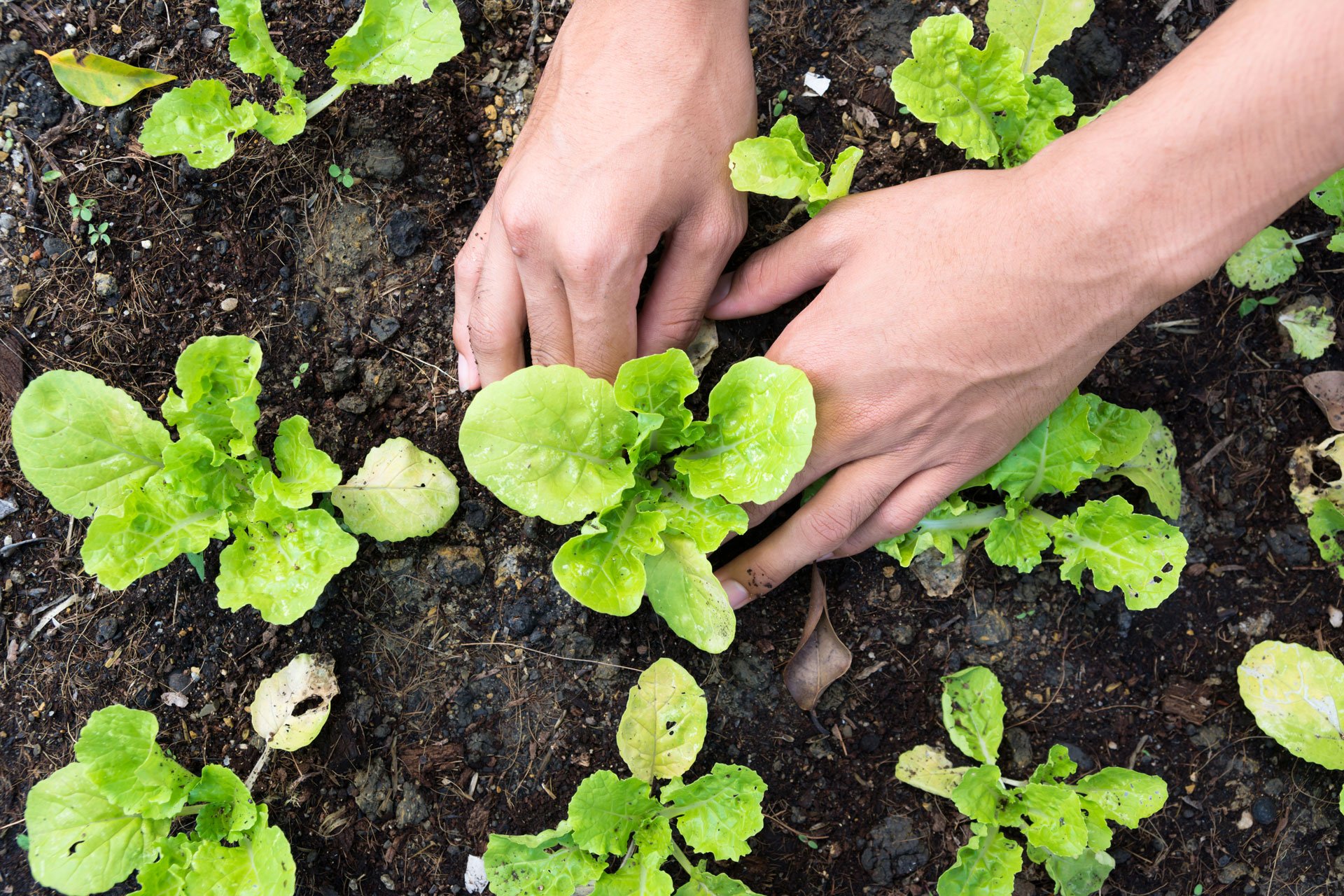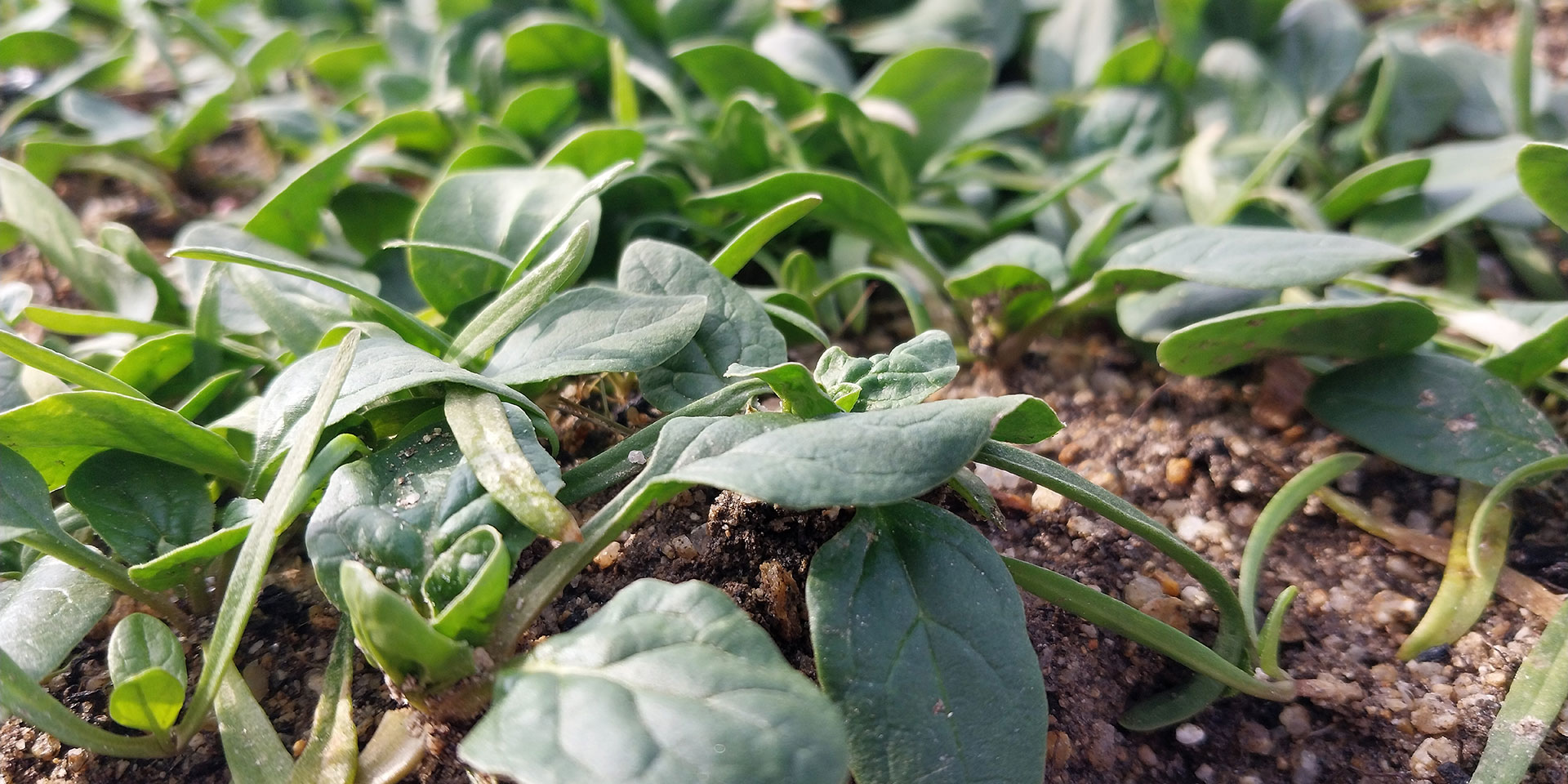Edible landscaping is beautiful and delicious
Rising food prices and a desire for an eco-friendlier yard are leading many people to gardening — a fun, enriching practice with many documented mental and physical health benefits. Home gardening became popular during the pandemic — and stayed popular even after lockdown, with polls showing 8 in 10 U.S. households participating in gardening activities.
You may already be planting vegetables to eat, and decorative plants to beautify your home, but you can combine both by planting an edible landscape — a low-maintenance way to bring fresh, hyperlocal produce into your home and complement other sustainability habits like reducing food waste and composting. Edible landscapes can also be part of a larger gardening plan that attracts pollinators, provides wildlife habitat and erosion and flood mitigation, and more. Because edible plants encompass such a range of possibilities, you can plant an entire landscape that includes multiple zones: From shady, moist forested areas to bright sunlight and drier soil, which means edible plants can be a part of your garden wherever you live.
Planning before planting
There are a few things to consider when choosing edible plants and mapping out where they’ll go:
What do you want to do with the food? Do you want to eat it fresh, cook it or preserve it? Maybe a little of each? To avoid potential waste, be honest with yourself about how much food the plants might yield, what you plan to do with it and how you’ll handle any extras you can’t gift or consume. For example, fruit trees, when properly tended, can yield hundreds of pounds of fruit: Pears can yield up to 150 or 200 pounds, and some standard-size apple varieties can yield up to 900 pounds! If you don’t want to commit to processing or freezing that harvest, limit the number of trees or skip them altogether. Or think of where you can share your extra bounty (like with neighbors or a local food rescue).
Consider the basics. What is your growing zone? What’s the soil like? How much rain do you get? What sorts of sunlight (full/partial/shade) does each area get? In other words, does your yard provide the conditions that your preferred plants need to thrive (or can you supplement, for example, with an irrigation system or hand-watering)? If not, what other plants would be a better fit? Your local extension service, gardening center or public library are excellent resources to help with this. There are beautiful, edible plants for every growing zone, according to Tammy Sons, founder and CEO of TN Nurseries in Tennessee, an online outfit specializing in native plants. She adds, “If you go for perennials in a cold zone, go for more hardy plants like blueberries and rhubarb. In warmer zones, go for heat-tolerant plants like figs and pomegranates.”
When possible, look to Indigenous growing traditions in your region, too: Many permaculture concepts, which are useful for creating a sustainable garden, are rooted in (though they don’t always acknowledge) Indigenous practices. Learning how people have grown food in your area for centuries can help you grow food there, too.
Location, location, location. Your plants’ best location is one where they can thrive and where they can also fit in as a larger part of the garden. You may want a certain aesthetic for your garden: for example, varied heights, colors or textures of plants. Or parts of the garden (or an entire garden!) fitted to a certain theme: A certain color, a certain cuisine (Mediterranean herbs or West African culinary plants) or a certain technique (fruit to preserve or hearty greens for stir-fries).
Planting a variety of plants suited to the conditions of your garden ecosystem, particularly ones that bloom at different times, gives you color and interest throughout the growing season, attracts and feeds a variety of pollinators, and makes your garden more resistant to pests.
Plan your plantings so you can easily reach each plant to harvest it; for example, leave paths between plantings or use raised beds. And for plants with deeper roots like shrubs and trees, be sure to plant away from underground utilities: You can call 811 to request that your utilities are marked before you dig, if you don’t know where they are.
Are you ready for commitment? How much time do you want to spend tending to your garden? If the answer is “not much” i.e., you’d rather spend an hour a week than five — consider hardy perennial plants that can survive if you forget a watering session or if there’s a light frost (lavender and rosemary are two such plants in my garden). Some fruits, like black raspberry or other canes (like blackberry) can be lower maintenance once established (though note they can spread, so give them room), as can many herbs, from lemongrass to lemon balm, and some bush fruits like elderberry.
If you love spending more time in your green space, expand your sights to include annual plants or those that need a bit more TLC. Many fruit trees, for example, require pruning, as well as watering, soil amendment and, in some cases, the application of organic pest control (like neem oil).
Look for native options. There are several reasons to go local: Native plants feed native pollinators and wildlife who have adapted to them, and because they’re adapted to your area, they are often lower maintenance. Still, with changing climate and growing zones, it’s wise to look at native plants’ growing requirements before assuming that native = perfect for your garden. Ask your local native plant–friendly garden center, extension office, community garden, library or local gardening groups for advice.
I grow mountain mint, rather than peppermint, for example, because it’s endemic to my region — thus naturally suited to growing here — and it won’t become invasive. Plus, mountain mints are beautiful plants with a wider variety of flavors than peppermint, ranging from earthy to citrusy. Or you can grow passionflower to enjoy in beverages, on its own or in desserts.
Plants for your edible landscape
In addition to native species, look to other edible plants that grow well in your area and that you enjoy eating. Here are a few of my favorites:
Ground cover/filler
Great for between rocks, along paths, or other places where you need some low-growing cover, these plants can fill in spaces or sit at the front of a garden with taller plants behind them. For low-maintenance plants, strawberry patches, violets (whose leaves and flowers also make a delicate tea!) and clover make nice ground cover.
Thyme and clover are two popular grass replacement options that are edible, act as living mulch and save you the hassle of mowing. Plus, they’re beautiful to look at: “When creeping thyme blooms, it becomes a sea of purple,” says Elizabeth Jones, The Seed Librarian at Jefferson Public Library in Georgia.
Mid-size plants and bushes
Mid-size plants (think knee- or waist-high) can fit nicely between low-growing and ground cover plants and the larger bushes or trees at the edges of your landscape. Mints, and other herbs like rosemary or lemon verbena, do well in these areas, as do standalone plants such as compact goldenrod.
Jones says two of her favorites are bachelor buttons and hibiscus flowers: “Bachelor button flowers are subtly spiced and sweet. They can be baked in cookies, sprinkled on salads and used in pasta. Hibiscus flowers can be used in tea.”
“Bachelor button flowers are subtly spiced and sweet. They can be baked in cookies, sprinkled on salads and used in pasta. Hibiscus flowers can be used in tea.”
There may be some plants, like cardoons, that you use decoratively but can also be enjoyed as food too (cardoons, once prepped to remove their spiky exterior, are excellent fried crisp or cooked into risotto).
Colorado-based landscaper Ross Hulstein notes that drought-tolerant globe thistle (aka echinops) — with its spiky purple orb-like flowers that are known for attracting pollinators — has unexpected culinary applications: “Echinops [is] a perennial bush with food not only from the roots but also from the seeds, which, after roasting, resemble nuts.”
But even familiar plants can have surprise uses. Hulstein explains, “You can grow many edible plants in your garden that will not only decorate your plot but will also become an unusual addition to your menu. For example, blueberry [is] known for its berries, but its leaves can also be used to brew tea.” Depending on their size, blueberries can ride the line between being an edible mid-size plant or a hedge.
Hedges, edges and trellised plants
Taller plants are often planted at the edges of gardens: My stand of tall, showy goldenrod graces my front yard each fall (and provides late-season food for pollinators); I infuse the blooms and leaves into salt, sugar and vinegar, and make them into tea, for a delicious, piney addition to my kitchen.
With garden edges, the sky is the limit: Think larger bushes and dwarf trees that provide privacy, interest and a host of colors (like big blueberry bushes, but also smaller trees like pawpaws or dwarf varieties of apple and pear cultivars). Some flower bushes, such as rose or hibiscus, might be in the middle or back of the garden, depending on their size.
Serviceberries, which thrive in most growing zones in the U.S. and grow 15-25 feet high, are often used as decorative landscaping plants but are also edible (and delicious!). They taste like a blend of blueberries, strawberries and almonds, and are at home in berry dishes from desserts to syrups, as well as just enjoyed by the handful.
Hedges can be made with fruit and nut trees, like hazelnut and Nanking cherry. And, consider edible vines, too: They are beautiful snaking up fences and trellises and are great for a compact garden where you want to grow up, not out. Hardy kiwi vines and passionflower are perfect additions to a fruit- and flower-lover’s garden, and beautiful hops are great for brewing. Of course, trellises are also ideal for runner beans and other vining food plants (like peas), though these annuals do not provide an ongoing privacy hedge. If you want plants that can spread out and take up some space, consider canes like blackberries or raspberries (just take care that they don’t become invasive).
Large trees
If you’re fortunate enough to have space to grow some big trees, the payoff is huge for you and your local ecosystem: Mature oaks (whose acorns are edible with some work, and whose leaves can add tannins to pickling brine) make important habitats throughout their lifecycles. Pecans and hickory nuts are delicious as well as stunning to look at. And pines — quite a few of which, like white pine, are edible and great for infusing in sugars, liqueurs, syrups and teas — provide year-round color and interest.
Specialty gardens
Get the latest food news from FoodPrint.
By subscribing to communications from FoodPrint, you are agreeing to receive emails from us. We promise not to email you too often or sell your information.
Top photo by avoferten/Adobe Stock.
More Reading
Uprooting plastic: Why and how to reduce plastic in the garden
June 4, 2025
5 easy-to-grow vegetables and herbs for beginner gardeners
April 11, 2025
Six unusual greens to try
September 4, 2024
5 ways climate change could impact your home garden
March 14, 2024
Seed saving as a living legacy
November 7, 2023
How to Prevent Garden Food Waste
July 11, 2023
“Under the Henfluence” Urges Us to See Hens as Complex Beings
May 10, 2023
Which Gardening Method is Right for Your Home Garden?
March 17, 2023
Things to Keep in Mind If You Want to Get Backyard Hens for Eggs
November 18, 2022



